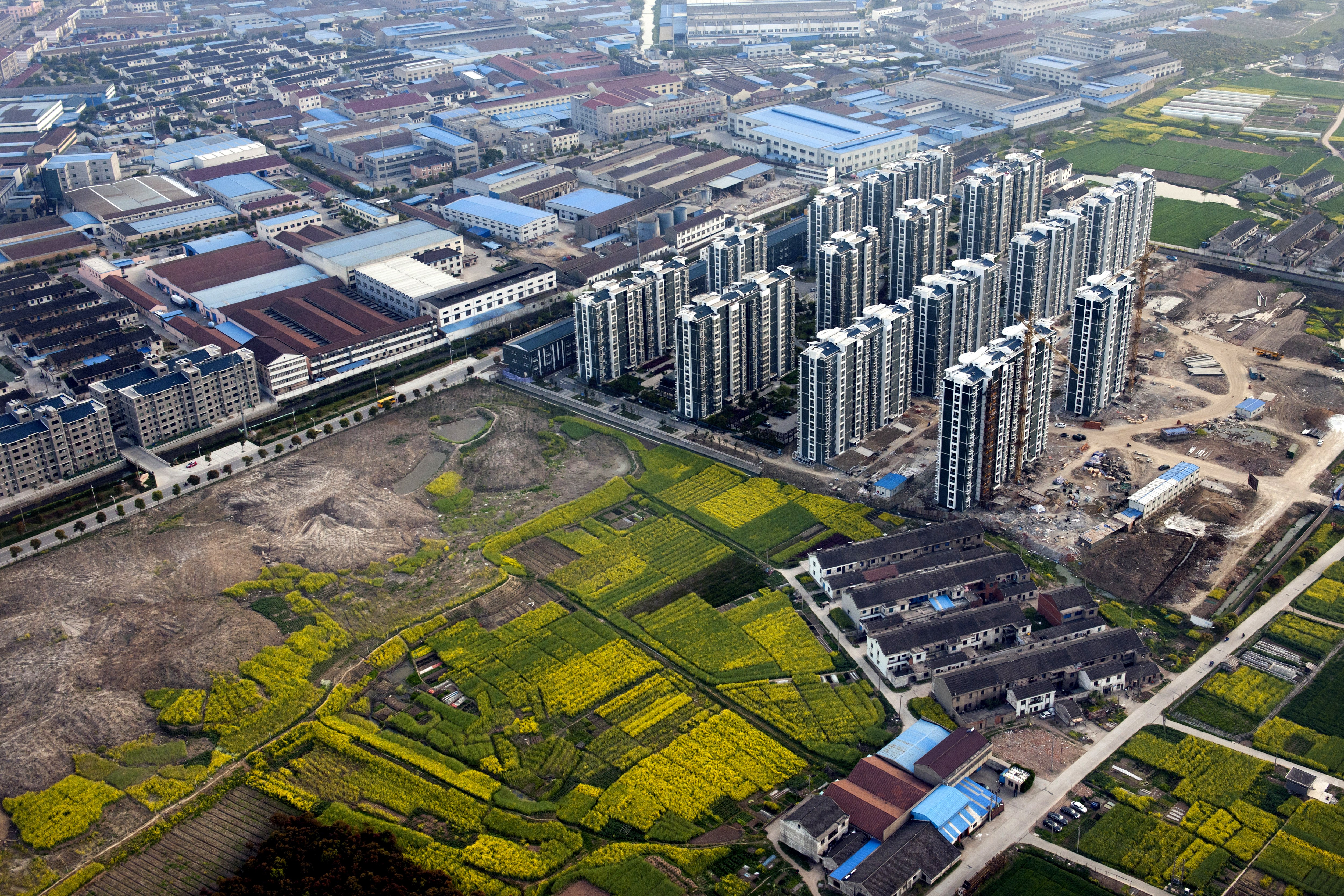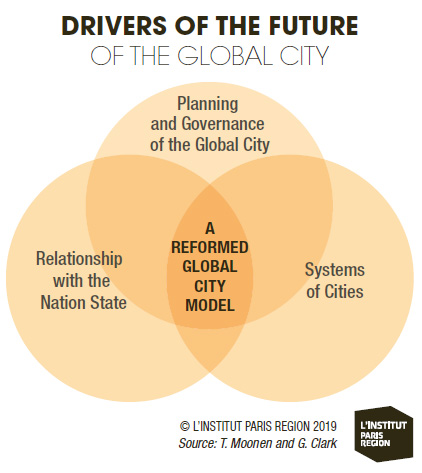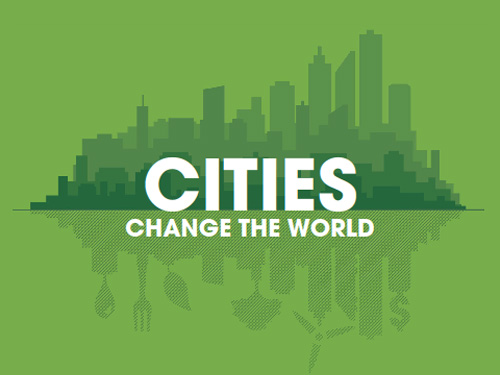This volume of Les Cahiers comes at an important moment in the story of globalisation and urbanisation, and their progeny known as the global city. In the past 10 years, more or less since the global financial crisis and its repercussions, a debate has emerged about whether the superstar cities of the 1990s and 2000s (New York, London, Paris, Tokyo, Hong Kong, and Singapore) are not in fact a model of failure rather than success.

Despite a prior recognition that these cities played important roles as hubs of a globalising economy and accelerators of productivity through their roles as HQ locations, advanced services providers, and magnets to cosmopolitan talent, some scholars and media commentators have more recently emphasised the trials and tribulations of today’s global city. These include the inflation in the housing and real estate markets of such cities, the centripetal force they appear to play in their national economies and labour markets, their role in the ‘financialisation’ of real estate and other assets, and their ‘metropolitan elites’ that increasingly seem to be ‘citizens of anywhere’ rather than ‘somewhere’. These attributes of the global cities are now cited as proof of the instability and likely inexorable decline of the global city model. They are often also invoked to argue for urgent reforms in order to prevent other distorting global cities from emerging. The result is there is now a more open and sustained debate about the advantages and disadvantages of global cities, and more comparison of systems of cities that have them and those that do not. In our book World Cities and Nation States1 we attempted to address these debates. We developed a formula that showed the reciprocal ‘input and output’ flows between world cities and their national economies, arguing for a more evidence-based discussion both of what global cities contribute to national economies and how a reforming agenda might be developed to better optimise the role of world cities in respect of their wider national systems of cities. All of this means that the future of global cities is open2. They may prove to be economically necessary but politically difficult, or socially important but environmentally damaging.
More globalising cities, and more ways of globalising
Looking forwards we can observe three dimensions of how the future of global cities might evolve over the next 30 years. By mid-century there will almost certainly be many more globalising cities. Despite the current challenges on multi-lateral trade agreements there is underlying growth of cross-border flows of products, services, capital, people, and ideas all supported by emergent technologies coupled with geo-spatial development that is driving demand. Although ‘policy’ on issues like global trade, aid, and migration may be in a negative populist cycle, there are strong thrusts towards ongoing and deepening global interdependence. This interdependence is equipping more cities with the assets and know-how to acquire the key traits of metropolitan areas that successfully globalise3. It already makes little sense to think about the future of global cities as simply being about more cities that do what New York and London and Paris and Tokyo do. Working with JLL Cities Research Centre we have observed at least 10 types of global city that each share common paths and common imperatives based on their distinctive roles in the global economy. Other groups of global cities are also emerging much more clearly in these current years. The specialists in science and technology – the Tel Avivs and the Austins – are having to supplement their innovative edges with a widely appealing lifestyle and a diverse cosmopolitan culture. The beacons of compact urbanism and high quality public services – the likes of Vancouver and Copenhagen – face challenges bringing forward large sites to serve future growth. And the centres of institutions and diplomatic influence have dilemmas about how to diversify and leverage their inherited status to achieve visibility in other niches. We can also spot common threads among the emerging megacities and the diversifying commodities hubs, among others. Many more types of globalising city will emerge in the decades to come, each contending for particular kinds of contested activity that will require an effective model and identity in order to grow and sustain these roles.
A reformed model of globalisation of cities
Looking ahead we can observe three kinds of pressure to reform the global cities model in future. Firstly, reforms in how global cities are planned, governed, and led are needed in several areas. These will include infrastructure, spatial planning and housing policies where market-led solutions have been ineffective in tackling the inflationary effects of financialisation of housing assets. This is likely to lead to renewed interest in new social and public ownership models for housing and for much larger-scale solutions to housing supply that will involve more ambitious spatial development initiatives, possibly involving employers much more directly in housing provision. We can expect a strong push for global cities to adopt more proactive economic inclusion policies and incentives. Global cities will increasingly seek to become smart cities with systems that are more interoperable, and in doing so they will make much wider use of their scale advantages through digital platforms that serve transport, energy, food and social services.
Secondly, relationships with Nation States and their Governments will also be a focus for reform. In more centralised countries where National Governments are highly engaged there will be increasing deal-making between the leading cities and the nation states that essentially ‘trade’ for flexibility and resources of these cities in return for greater commitment from those cities to territorial solidarity. These world cities will find that they must demonstrate their benefits to the nation as a whole and take much more active steps to leverage their own advantages on behalf other centres, cities and regions. Cities with more remote relationships to National and Federal Governments will need to build wider coalitions to promote policies that are conducive to their success. The more self-governing global cities will continue to advance but will need to address their neighbours much more as they grow.
Thirdly, global cities will be required to recognise their responsibilities to their wider system of cities and regions. They are part of systems at sub-national, national, and indeed continental levels that will bring opportunities but also an onus for more active partnerships with neighbours and the wider network of cities which all play diverse and distinctive roles. The relationships between globalising cities and rural areas will have renewed focus. The opportunities brought by new technologies to de-concentrate, unbundle, and dis-agglomerate global cities will either be the subject of careful planning or will be chaotic processes, perhaps leading to disputes and conflicts. There will be creative potential both to reshape global cities and their economies and internal systems, and to re-engineer their relationships with other parts of their territorial framework.
For these essential reforms to become reality, global cities will also depend on progress in other areas: strides forward in the metrics and ‘science’ of cities; better networking to fill the gaps in global governance that may emerge; and a more defined equilibrium with the world of business that now seeks to become more involved in both the leadership of global cities and in promoting a wider network of globalising cities. The cycle of reform has begun in many countries but is largely incomplete. How far will these reforms go? Will they fi nd a way to reap the advantages of the global city model while also demonstrating better outcomes on territorial solidarity and sustainability? This will determine whether the idea of global cities will retain its momentum and support or whether it ultimately comes to be seen as a passing phenomenon of the late 20th and early 21st centuries.
Prof Greg Clark and Dr Tim Moonen, The Business of Cities, University College of London


